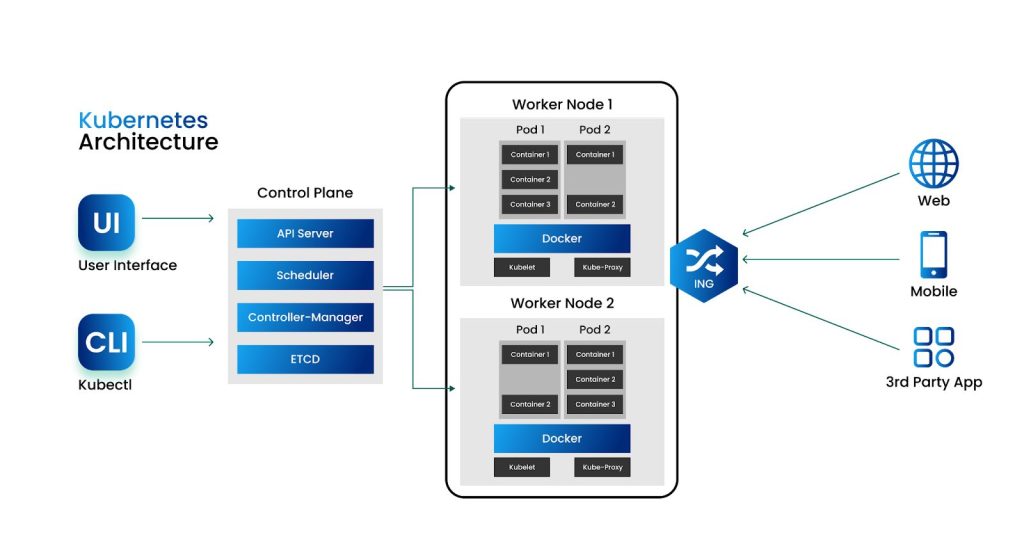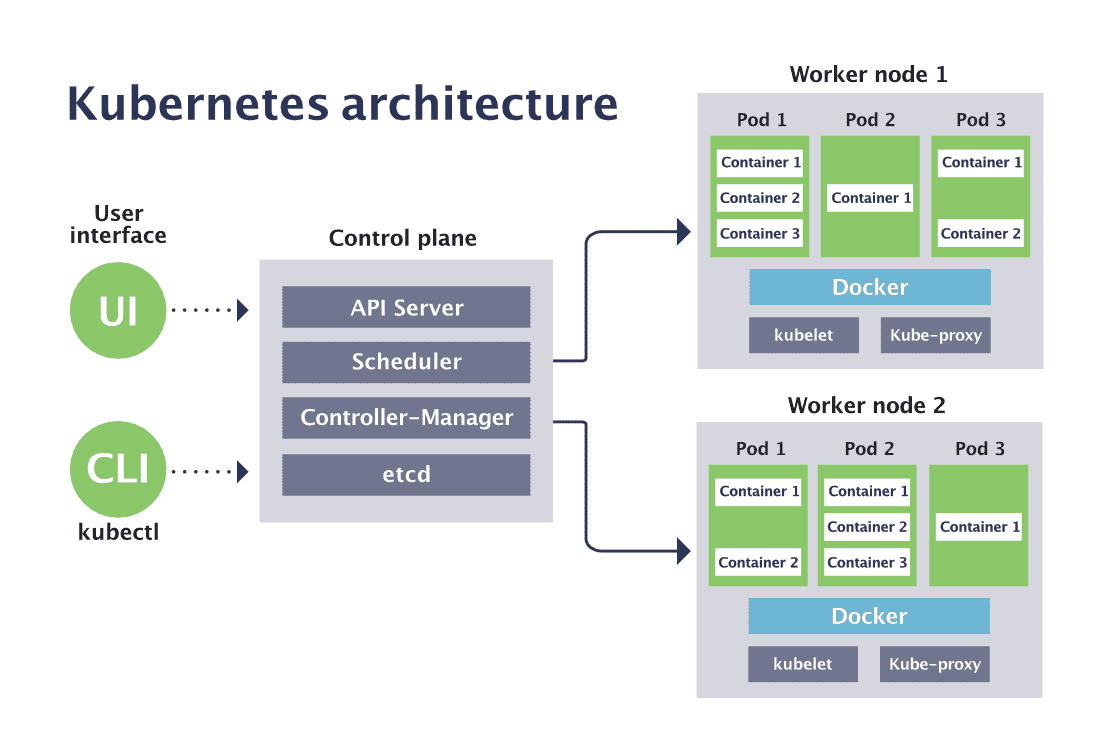Control Plane:
- API Server: Acts as the brain, receiving orders and distributing tasks.
- Scheduler: Determines where containers should be placed on worker nodes, like managing a seating plan for a party.
- Controller Manager: Ensures the cluster state aligns with your specifications, behaving somewhat like a meticulous boss.
- Etcd: The cluster’s memory palace, storing vital information for reference.
Worker Nodes:
- Kubelet: Oversees containers on the node, functioning as the local foreman.
- Pods: Collections of containers sharing resources, akin to colleagues collaborating on tasks.
- Containers: The actual workforce, each focused on its designated job.
Bonus:
- Data Plane: The operational arena where tasks are executed (comprising worker nodes, pods, and containers).
- Deployment: A blueprint for creating pods, essentially a recipe for assembling your container crew.

In a nutshell, Kubernetes architecture can be likened to a well-coordinated workforce, with the control plane acting as management, worker nodes as the operational ground, and various components ensuring smooth operations, just like a well-oiled machine.


This Post Has 0 Comments